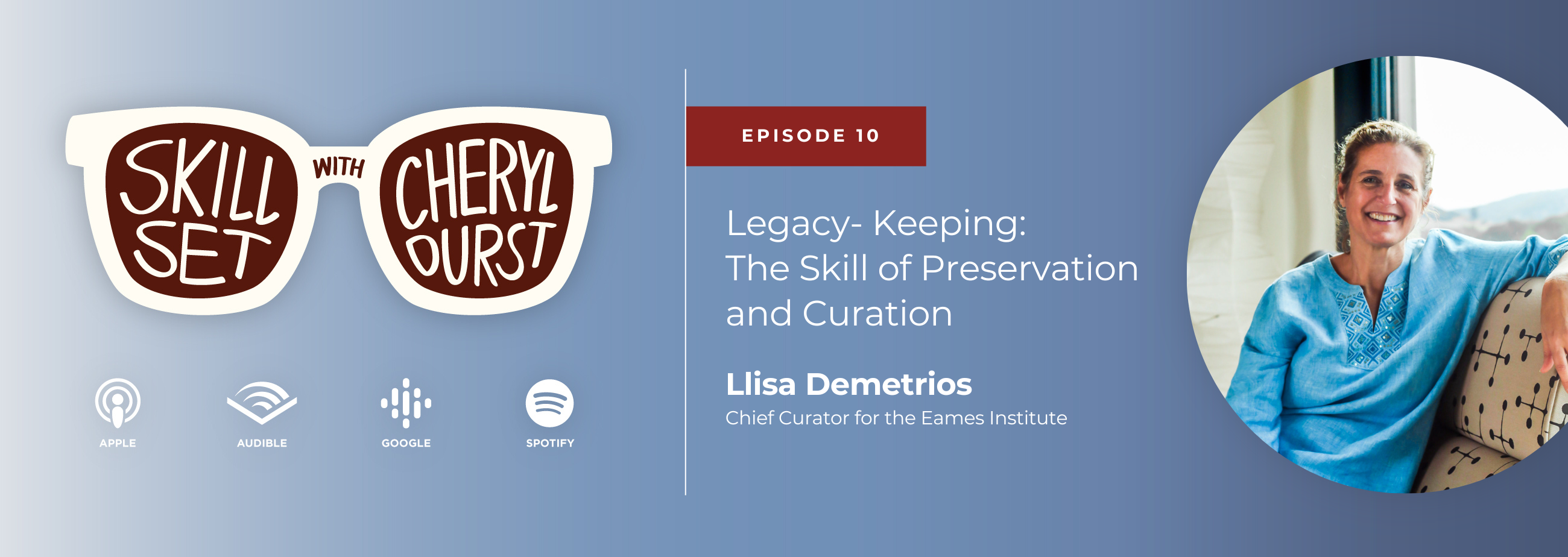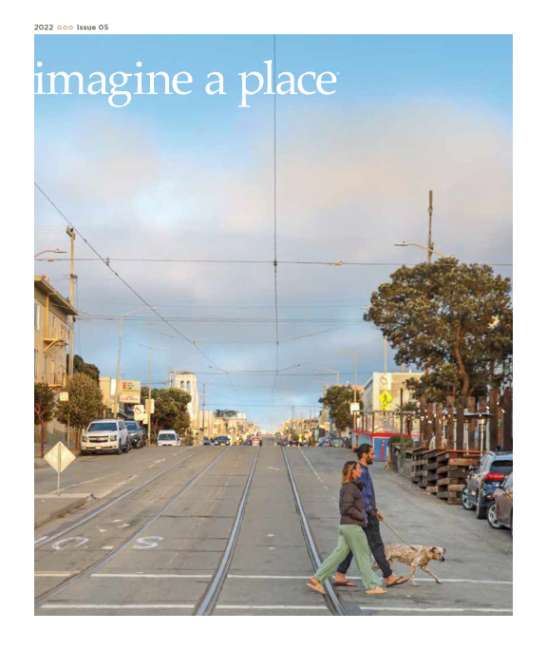
Legacy-Keeping: The Skill of Preservation and Curation
In this episode, Cheryl Durst interviews Llisa Demetrios, the granddaughter of the renowned designers Ray and Charles Eames. In this episode you learn more about Llisa's upbringing and how her connection to such iconic figures influenced her experience and developed her distinctive set of skills. During their conversation, Cheryl and Llisa discuss the significance of legacy-keeping and emphasize the importance of maintaining high quality in their work, using "the finial" as an example.
Learn more about Llisa:
Llisa Demetrios resides in the Northern California ranch that her mother, Lucia Eames, bought in 1992 to store the collection of her renowned designer parents, Ray and Charles Eames. The ranch, designed by William Turnbull, presently serves as the office of the newly-launched Eames Institute of Infinite Curiosity and houses a small part of the family's archive. Although the property is still undergoing renovations and not open to the public, Demetrios operates the institution as an online platform to engage the public with her grandparents' impressive heritage. In addition to managing the challenging task of cataloging one of the largest design archives in the country, she is also a sculptor who works primarily with bronze, a material she is familiar with and trusts due to her years of experience. Her sculptures, mainly abstract, evoke a natural ease and reference architecture and interior design, which are inspirations that are inevitable after being raised by grandparents who are considered pioneers in American design.
Explore the intriguing world of Charles and Ray and their legacy:
Charles and Ray Eames got married in a small ceremony in Chicago in 1941 before moving to Los Angeles with no clear job prospects. They quickly made connections and were eventually provided with a home by architect Richard Neutra, which became the foundation for the Eames Office. Through experimentation with their "Kazam! machine," they developed a process to bend molded plywood into a curved shape. During World War II, they created a molded plywood splint for wounded soldiers. With the help of John Entenza and Colonel Evans, they were able to finance the splint's production on a larger scale. The couple went on to create many furniture designs and worked for major corporations like IBM. The Eames Office continues to promote their legacy and collaborate with authorized manufacturers of their furniture, curate exhibitions, and work with the Eames Foundation to preserve the Eames House.





